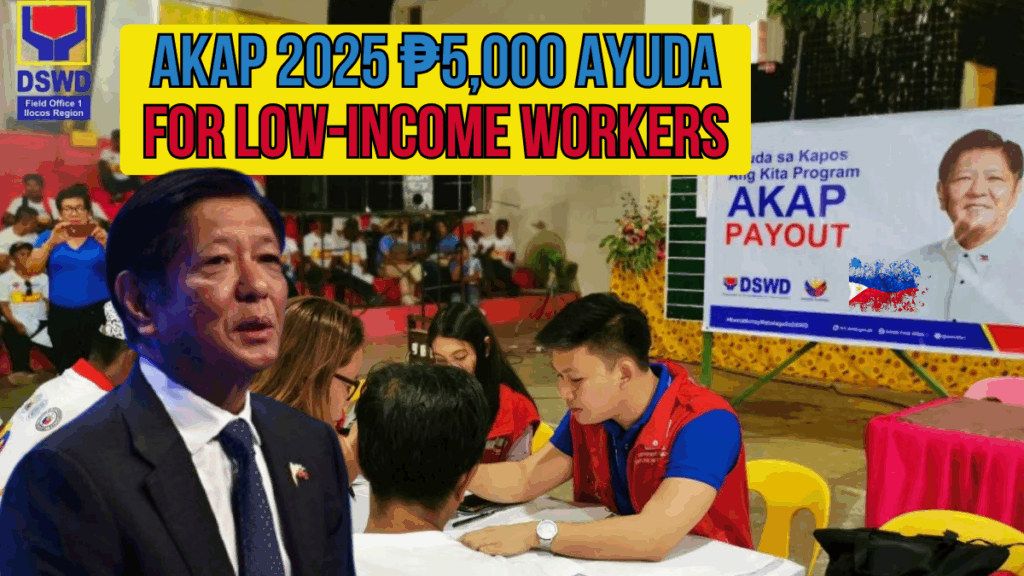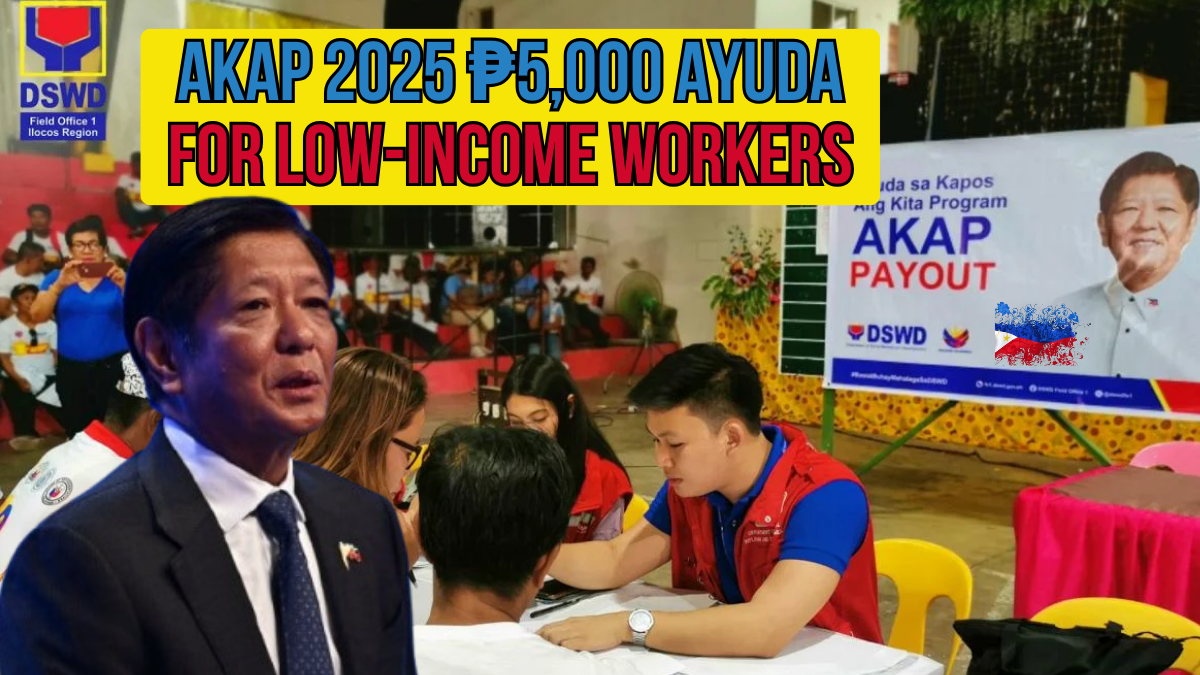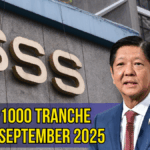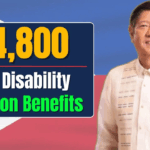The Abot Kamay ang Pagtulong (AKAP) program continues in 2025, providing much-needed financial support to low-income workers and displaced Overseas Filipino Workers (OFWs). With rising living costs, unstable jobs, and ongoing global economic challenges, the government’s one-time ₱5,000 ayuda serves as a direct relief measure.

This initiative ensures that qualified beneficiaries can manage essential household expenses, buy food, pay utility bills, or cover children’s school needs. For OFWs who lost jobs abroad, the AKAP aid provides temporary stability while they look for new opportunities.
What is the AKAP 2025 Program?
The AKAP program was launched at the height of the pandemic as a lifeline for displaced OFWs and low-income workers in the Philippines. By 2025, the government has decided to continue and expand the program to ensure vulnerable groups remain supported.
- Cash Grant Amount: ₱5,000 one-time ayuda
- Purpose: To cover basic necessities like food, transportation, healthcare, and utilities
- Administered by: Department of Labor and Employment (DOLE) and the Overseas Workers Welfare Administration (OWWA)
Unlike a loan, the aid does not need to be repaid, making it a direct financial grant.
Short Summary: AKAP 2025 ₱5,000 Ayuda
Detail |
Information |
|---|---|
Program Name |
Abot Kamay ang Pagtulong (AKAP) 2025 |
Cash Grant |
₱5,000 one-time ayuda |
Administered By |
DOLE & OWWA |
Eligibility |
Low-income workers, displaced OFWs, vulnerable groups |
Requirements |
Proof of employment, ID, displacement certificate |
Application Method |
Online (DOLE/OWWA) or via local DOLE offices |
Payment Method |
Direct bank deposit, remittance, or cash distribution |
Official Website |
Why AKAP 2025 is Important
Low-income workers and displaced OFWs remain among the hardest hit by inflation and unstable employment. Many face irregular work schedules, wage delays, and higher costs of living.
The ₱5,000 ayuda provides:
- Temporary financial relief for daily expenses.
- Support for OFWs returning home due to job loss or reduced contracts.
- A bridge for families struggling to cover immediate needs like utilities, rent, or groceries.
Though not a permanent solution, it represents the government’s effort to protect vulnerable groups during uncertain times.
Who Can Qualify for AKAP 2025?
Not all workers automatically qualify. The government has outlined eligibility guidelines to ensure that the program reaches those most in need.
General Qualifications:
- Must be a Filipino citizen (local worker or OFW).
- Belong to the low-income or vulnerable sector with limited or no stable income.
- For OFWs: Must have lost jobs, been displaced, or experienced reduced working hours due to global or local economic disruptions.
- Must provide documentary proof of employment (contracts, payslips, termination notices).
- Must not have received other similar government financial aid at the same time.
These requirements may change depending on updated DOLE or OWWA guidelines, but the focus remains on helping low-income families and displaced OFWs.
How to Apply for AKAP 2025
The application process can be done online or through government field offices.
Step-by-Step Process:
- Prepare Documents: Valid ID, proof of employment, and certificate of displacement if applicable. OFWs must provide OWWA membership records.
- Submit Application: File through DOLE/OWWA online portals or visit the nearest DOLE field office.
- Verification Process: Government authorities will review submitted documents. Processing may take several days or weeks.
- Approval & Release: Once approved, the ₱5,000 aid will be released through direct bank deposit, remittance centers, or local cash distribution.
Applicants should keep contact details updated to avoid missing official notifications.
Challenges in Availing AKAP
While the program helps thousands of families, some applicants face difficulties such as:
- Incomplete or incorrect documents delaying approval.
- Duplicate claims if other government aid was already received.
- High application volume causing longer processing times.
To avoid rejection, applicants should double-check requirements and rely only on official government announcements instead of unofficial social media sources.
Impact of the ₱5,000 Ayuda on Families
Though ₱5,000 may seem modest, it provides critical short-term relief:
- Families use it to pay overdue bills.
- Others purchase food supplies or cover children’s school needs.
- Some OFWs use the funds to start small livelihood projects while seeking stable work.
The program’s impact is strongest when combined with other government initiatives, such as skills training, reintegration programs, and wage support.
Government’s Commitment
The continuation of AKAP in 2025 reflects the Philippine government’s effort to support low-income workers and OFWs.
Beyond financial aid, complementary programs are being expanded, including:
- Job creation initiatives
- Skills retraining programs
- Support for reintegration of OFWs
This layered approach ensures that ayuda is not only about immediate relief but also about building resilience for long-term stability.
FAQs on AKAP 2025 ₱5,000 Ayuda
1. Is the AKAP ₱5,000 ayuda available nationwide?
Yes, it is available across all provinces and regions where OFWs and low-income workers reside.
2. Do beneficiaries need to repay the ₱5,000 ayuda?
No, it is a cash grant, not a loan.
3. How long does processing usually take?
It may take 1 to 3 weeks, depending on document completeness and application volume.
4. Can I apply if I already received other financial aid?
Generally, no. Applicants who received similar assistance may not qualify. Always check updated DOLE or OWWA rules.
5. Where can I check the status of my application?
Through official portals like DOLE or OWWA websites, or by visiting local DOLE offices.
Conclusion
The AKAP 2025 ₱5,000 ayuda remains a vital support mechanism for low-income workers and displaced OFWs. It may not permanently solve economic struggles, but it offers meaningful temporary relief for thousands of Filipino families.
By ensuring complete documentation, following application guidelines, and staying updated through official channels, more Filipinos can benefit from this program.
The government’s decision to sustain AKAP in 2025 underlines its commitment to inclusive economic recovery and the protection of vulnerable citizens.
For More Information Click HERE




